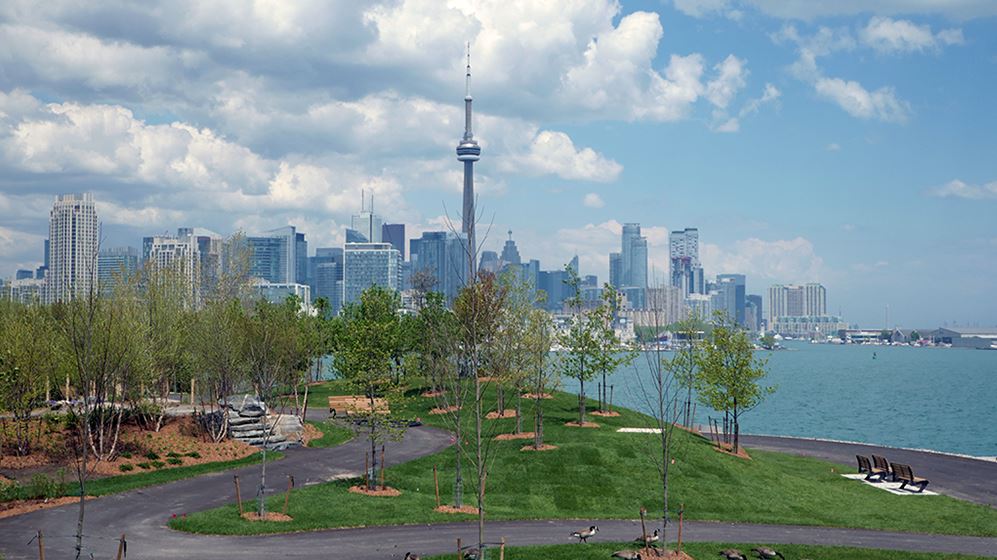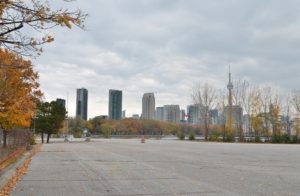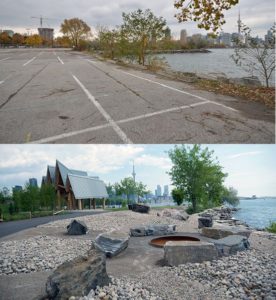During my (Storm) many business trips to Toronto, I always passed a rather sad, rundown-looking waterfront attraction on the shore of Lake Ontario as I rode into the city from Pearson Airport. It’s called Ontario Place, and it’s sad no more.
On June 19, 2017, the province of Ontario announced that it was revitalizing Ontario Place into a vibrant, year-round waterfront destination that is innovative, fun and engages residents and visitors of all ages.
As a first step, Ontario has transformed a former parking lot into the new, 7.5-acre Trillium Park and William G. Davis Trail, opening as part of Ontario’s 150th anniversary celebrations. As you can see from these photos of Trillium Park, progress has been rapid.
Throughout this process, Ontario Place continues to be a venue for live music, festivals and events.
Here are just some of the benefits of this process of revitalizing Ontario Place:
- Creating jobs and supporting the economy: The Trillium Park and William G. Davis Trail project created and supported jobs for Ontario workers. Nearly 400 people worked on-site, and the project also involved businesses from across the province, such as stone masons, quarries, nurseries and transportation companies, resulting in economic benefits for Ontario communities.
- Urbacon, the construction company who led the park and trail project, purchased materials from within Ontario, allowing them to support the use of local resources and reduce the environmental impacts resulting from transportation. LANDinc, a Toronto-based landscape architecture firm, was the lead on the design of the park and trail.
- Reflecting Ontario’s diverse landscape: The design of the Trillium Park and William G. Davis Trail uses building and plant materials from across the province. To create the bluff feature, about 1,700 tons of Muskoka granite stone were brought to Ontario Place from the Huntsville quarry. The largest single stone weighs 52 tons. 140 individual granite slabs came from Northern Ontario to complete the granite wall.
- Almost 1,200 Ontario trees were planted at the park and trail. Trees were brought in from nurseries from across the province and include red oak, red pine, and sugar maple marker trees. Approximately 28,000 shrubs and perennials were also planted and include highbush cranberry, wild ginger and St. John’s Wort.
- Sustainability: Throughout the construction process, sustainability and environmental impact were a high priority, with 90 per cent of waste materials diverted from landfills. Over the course of the project, 52,000 cubic meters of soil were brought to the site in 3,700 truckloads. Of that number, 29,000 cubic metres were from a residential suburb development east of Toronto. The project also included repairing nearly 600 metres of shoreline to prevent erosion.
As part of the celebrations for Ontario’s 150th anniversary, people can rediscover Ontario Place with a different themed event every long weekend this summer.
People across Ontario played an important role in creating the park and trail at Ontario Place.
As a result of public consultation, key features of the park and trail are included in the final design, including a pavilion.
The government also consulted with the Mississaugas of the New Credit First Nation on the final design.
Key features of the park and trail reflect their design ideas, including:
- Moccasin identifier: Located at the gateway ravine to the park and trail, this symbol is part of an Ontario-wide marker program to celebrate First Nations heritage and culture by providing a visual reminder to recognize and honour the past; and
- Marker trees: The park includes three marker trees along the trail. Marker trees were historically shaped into a specific form and used by Indigenous people for navigation or to mark significant Indigenous sites.
Our thanks to M.Reza Dadashi, Urban Planner & Researcher with the Canadian Urban Institute for bringing this news to our attention!
All photos courtesy of the Ontario Ministry of Tourism, Culture and Sport.



